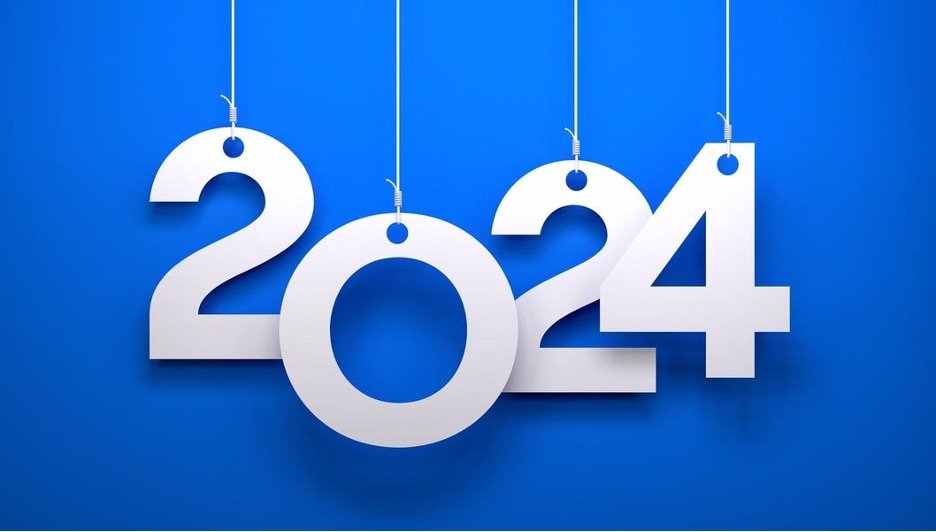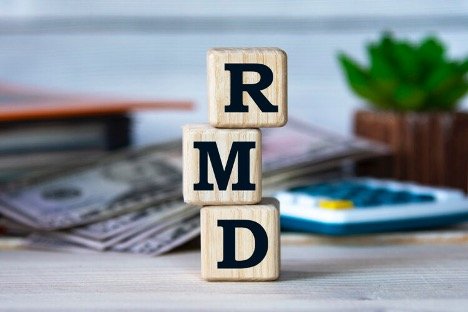Tax Time Windfall: Unleash the Power of 2024 Tax Breaks for a Brighter Retirement
Start the new year by sorting out your finances, especially with the many changes to retirement plans coming in 2024. The SECURE Act 2.0, passed in 2022, aims to improve the retirement system in America. Key highlights include:
Defined contribution retirement plans now have the flexibility to incorporate emergency savings accounts, allowing participants penalty-free access to funds.
Older workers gain the ability to contribute more to their 401(k)s and other qualified retirement accounts.
Required minimum distributions (RMDs) from workplace Roth 401(k)s will no longer be mandatory.
Employers are now permitted to reward employees' student loan payments with matching contributions into their retirement accounts.
Facilitated rollover of unused funds from a 529 college savings plan to a Roth IRA simplifies the process.
Collectively, these adjustments can significantly aid in retirement planning and contribute to bolstering your savings. For a more in-depth understanding, explore the details below.
Emergency Savings in Workplace Plan
Perhaps your emergency savings account requires some attention, especially in the wake of prolonged high inflation and rising prices.
Employers can now add an emergency savings account to retirement plans under SECURE Act 2.0. These accounts must be designated as Roth accounts and are specifically intended for non-highly compensated employees. To be considered a non-highly compensated employee, you must make below $345,000 in 2024 and you cannot rank among the top 20% of employees.
You can contribute up to $2,500 each year, but your employer may set a lower limit. This amount counts towards the yearly contribution limits. The first four times you withdraw money in a year, you won't have to pay any taxes or penalties. Your employer might also match your contributions, depending on the rules of the plan.
The inclusion of emergency saving funds can incentivize individuals to save for unexpected expenses and short-term financial goals. Employers have the option to include an emergency savings account in a retirement plan. Additionally, your plan administrator may provide alternative options.
Initiating an emergency savings fund doesn't necessarily have to be within the confines of a retirement plan either.
Higher Catch-Up Contributions for Older Workers
For the 2024 tax year, catch-up contributions to IRAs will now be indexed to inflation. Although contribution limits to retirement accounts undergo annual adjustments for inflation, catch-up contributions for older individuals haven't always received the same annual increase.
People who are 50 or older can add an extra $1,000 to the $7,000 limit for an IRA (traditional or Roth). Indexing aims to ensure that catch-up contribution amounts rise in tandem with the cost of living.
Those anticipating larger catch-up contributions to a 401(k) will need to wait until January 1, 2025. Starting from that date, the catch-up limits for people aged 60 to 63 will increase.
The increase will be at least $10,000 per year or 50% more than the previous year's catch-up amount. This applies only to people aged 60 to 63. This amount will also be subject to inflation indexing.
In 2024, people can put $23,000 into a retirement plan at work. Those who are 50 or older can add an extra $7,500.
No RMD from workplace ROTH IRA
While Roth IRAs typically do not require Required Minimum Distributions (RMDs), until 2024, individuals were obligated to take RMDs from a workplace Roth plan upon retirement and reaching the age specified by the Internal Revenue Service (IRS) for withdrawals from qualified retirement accounts.
From 2024, people who are old enough for a workplace Roth plan don't have to take out money. This adjustment potentially allows for extended growth of savings in such accounts, akin to non-workplace Roth accounts.
Assuming the 5-year aging rule has been satisfied and you are 59½ or older, tax-free withdrawals are permissible. However, it's important to note that if you reached required distribution age last year and haven't taken your first RMD, you may still owe it by April 1, 2024.
Unlike traditional 401(k)s or workplace plans, savings in this case don't accumulate tax deferred. However, you must begin taking required minimum distributions (RMDs) once you retire and turn 73 or older.
Student Loan Matching in workplace plan
Millions of individuals, including a significant number aged 50 and above, grapple with student debt.
In 2024, employers can offer programs that match student loan payments in retirement plans like 401(k) or others. Student loan repayments are starting again after a break caused by the pandemic. This means that it is now important for workers who are still paying off their loans.
To get the match, workers must confirm their yearly student loan payments and spend the money on education costs. Even if you only pay the minimum, you might still be eligible for a 401(k) match. However, this depends on the plan and there are other rules to consider.
529 to Roth IRA Transfers
If you have a child or grandchild who is the recipient of a 529 plan but doesn't intend to use the money for education, it is possible to transfer those funds to a Roth IRA. This transfer can potentially enhance their retirement savings.
From January 1, 2024, you can move funds to a Roth IRA in the beneficiary's name from your 529 account. This transfer won't have taxes or penalties and will be limited to $35,000 throughout the beneficiary's life.
The 529 account needs to be held for 15 years and will still have contribution limits like Roth IRAs. Note: Transfer amounts must also come from 529 contributions made 5 years or more prior to the 529-to-Roth IRA transfer date.
The Secure 2.0 Act enables individuals to transfer funds from a 529 account to a Roth IRA. This transfer is not subject to the usual income restrictions that apply to Roth contributions.
The IRS has not provided instructions on this law yet. However, it is anticipated that they will do so at a later time.
This could potentially result in changes in interpretation. Sometimes, the person who receives the 529 plan cannot transfer the full allowed amount for Roth IRA contributions. This could occur if the recipient did not earn any income or earned insufficient income in a given year, or if they already made the maximum contributions to a Roth IRA or a traditional IRA within the same year.
Transferring all assets from a 529 plan may take several years. This is because there is a yearly contribution limit of $7,000 for 2024. The 529 beneficiary's limits apply, not the parents. Only Roth IRAs can be converted, not traditional IRAs.
Bottom Line
Whether your aspirations for 2024 involve bolstering your retirement savings, achieving short-term financial objectives, or clearing the remaining balance of your student loans, it's advisable to seek guidance from a financial or tax professional tailored to your individual circumstances. By having a robust financial plan in place, you can usher in the new year with confidence.
Sources:
https://www.fidelity.com/learning-center/personal-finance/ways-to-save-for-retirement-2024
Disclosures:
This information is an overview and should not be considered as specific guidance or recommendations for any individual or business.
This site may contain links to articles or other information that may be on a third-party website. Advisory Services Network, LLC is not responsible for and does not control, adopt, or endorse any content contained on any third-party website.
This material is provided as a courtesy and for educational purposes only. Please consult your investment professional, legal or tax advisor for specific information pertaining to your situation.
These are the views of the author, not the named Representative or Advisory Services Network, LLC, and should not be construed as investment advice. Neither the named Representative nor Advisory Services Network, LLC gives tax or legal advice. All information is believed to be from reliable sources; however, we make no representation as to its completeness or accuracy. Please consult your Financial Advisor for further information.






